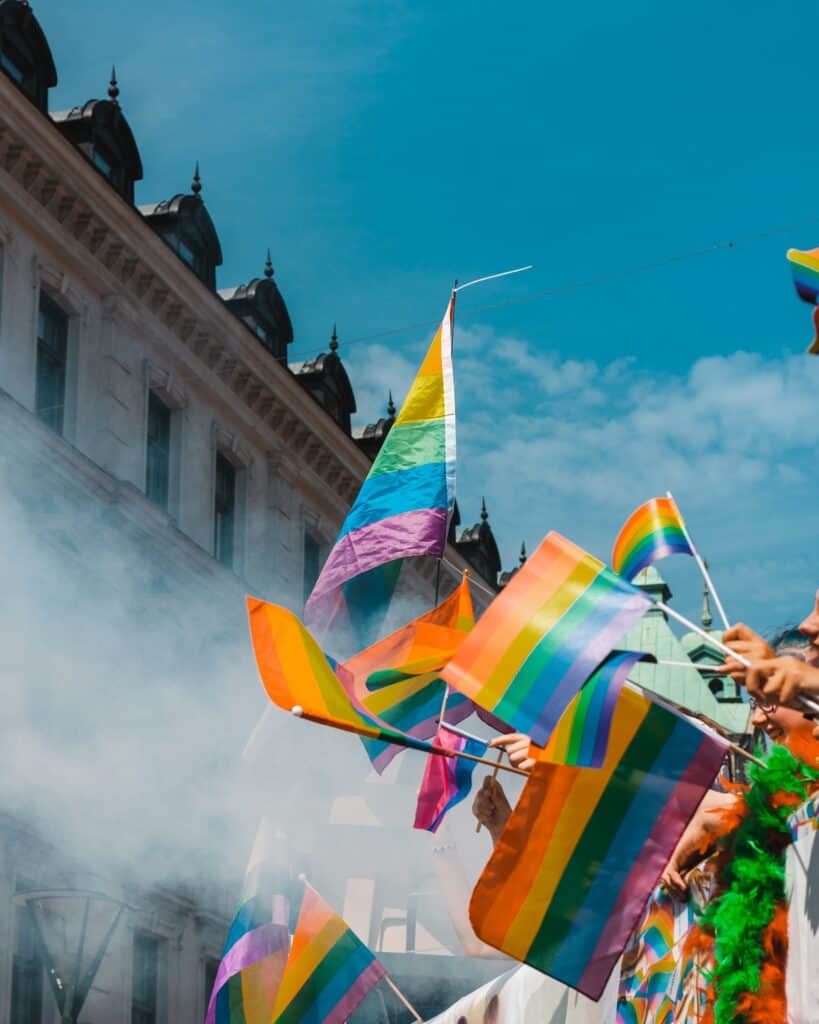October 11 is National Coming Out Day. Each year on this day, we show support for our friends, colleagues and family members who have had the courage to come out and live openly as LGBTQ+. It’s a celebratory day, but also a day to recognize the disparities and struggles faced by members of the LGBTQ+ community when living openly in society.
One of these struggles is that LGBTQ+ people are disproportionately likely to live in poverty. For many, the stark reality of queer life involves food insecurity, and in some cases living on the streets. Unfortunately, media representations of LGBTQ+ people living in comfort and style have contributed to what some have dubbed “the myth of gay affluence.” Social scientific studies have refuted the myth of LGBTQ+ financial security, by showing that members of the community face major financial and social hardships – particularly if they are Black and/or transgender.
In 2019, UCLA’s Williams Institute on Sexual Orientation and Gender Identity Law and Public Policy published a report on LGBT poverty in the United States. Its data showed that the overall poverty rate for LGBTQ+ Americans was over 35% higher than the poverty rate for their heterosexual, cisgender counterparts. The results illustrated that trans individuals and bisexual women face the highest poverty rates among gender identity/sexual orientation groups.
The report also revealed that LGBTQ+ people in rural areas have extremely high levels of financial hardship, with 26.1% living below the poverty line, compared to a poverty rate of just 15.9% for straight, cisgender people in rural areas. In addition, LGBTQ+ poverty levels were shown to be higher among people aged 18-24 than for adults in any other age range.
The creators of the National Transgender Survey published a special report on the status of Black trans people in America in 2015. The report showed that Black trans people have an unemployment rate of 20% – twice as high as the rate for African Americans in general, and four times higher than the overall US unemployment rate. Another report on the Financial Penalty for LGBT Women in America, published by the Center for American Progress and the Movement Advancement Project, found that trans women are 3.8 times more likely than the general population to live in poverty.
More recently, the COVID-19 pandemic has caused severe economic hardships across the country, including among LGBTQ+ households. According to the US Census Bureau, LGBTQ+ households report a higher rate of food and economic insecurity than non-LGBTQ+ adults. In addition, a recent poll showed that LGBTQ+ adults are 12% more likely than straight, cisgender adults to report that they or someone in their household has experienced COVID-era job loss.
There are many reasons why LGBTQ+ people face these economic disadvantages. If they are cast out of their families after coming out, it can have major economic consequences for the rest of their lives, particularly with regards to losing support for education and housing. LGBTQ+ people also face discrimination in the workplace, which affects their earning potential. TD Ameritrade conducted a survey of LGBTQ+ millennials, and found that they earned 12% less than their straight, cisgender counterparts. According to NCRC’s research issue brief, Same-Sex Couples and Mortgage Lending, analyzing 2018 Home Mortgage Disclosure Act (HMDA) data, same-sex couples, who are more likely to be minority, lower-income and younger than their different-sex counterparts, paid higher interest rates and closing fees on home loans.
A high poverty rate has major effects on the health of LGBTQ+ people, as indicators of health and wealth are strongly correlated. Many in the LGBTQ+ community are at increased risk of health conditions such as suicide, eating disorders, substance abuse, HIV/AIDS, various types of cancer and obesity. Members of the LGBTQ+ community often lack insurance and sufficient access to health care.
Overall, LGBTQ+ people report worse health outcomes than their straight, cisgender counterparts. The role of discrimination cannot be minimized. Many LGBTQ+ people have experienced discrimination when seeking medical care, and as a result are reluctant to trust medical personnel. Being LGBTQ+ in the United States has long involved institutional as well as social discrimination, which is often intensified by additional layers of identity, and associated discrimination.
This year, as we celebrate National Coming Out Day, let’s leave the myth of gay affluence behind. It serves no purpose other than perpetuating false stereotypes, and minimizing the hardships involved in the LGBTQ+ experience. Viewing the LGBTQ+ community through an upper-income, White lens prevents many Americans from recognizing that change is necessary to make the economy fair and just for all.
Jake Lilien is NCRC’s Counsel for Fair Housing Enforcement.
Karen Kali is NCRC’s Senior Program Manager for Special Initiates.
Photo by Teddy Österblom on Unsplash.



